Leaving a job can be a challenging decision, but when you’ve made up your mind, it’s important to inform your employer professionally and respectfully. One effective way to do this is by writing a short resignation letter.
This article will guide you through the process of creating a short resignation letter that formally informs your employer of your intention to leave your position. Whether you’re looking for examples, tips, or step-by-step instructions, we’ve got you covered.
What is a Short Resignation Letter?
A short resignation letter is a written document that an employee uses to formally inform their employer that they are leaving their current position. It is a concise and direct way to communicate your decision, providing your employer with the necessary information about your departure.
The letter should include your intention to resign, the date of your last working day, and a brief expression of gratitude for the opportunities you’ve had during your employment.
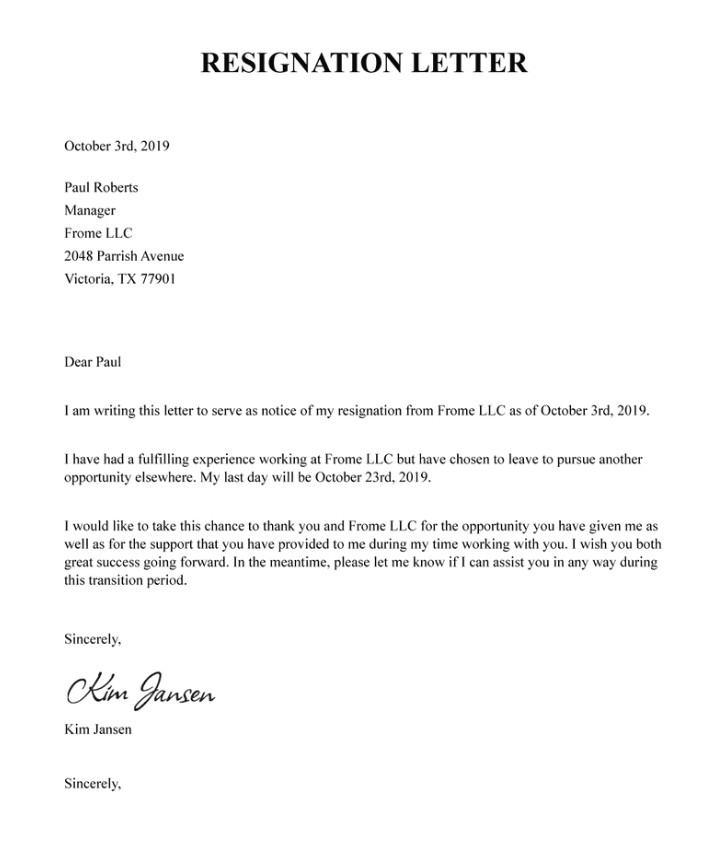
Why Use a Short Resignation Letter?
Using a short resignation letter has several advantages:
- Formal communication: A resignation letter is a professional way to communicate your decision to leave your job.
- Documentation: It serves as written proof that you have officially resigned and can be kept for future reference.
- Professional reputation: Leaving on good terms with a well-written resignation letter can help maintain your professional reputation.
- Smooth transition: By providing a notice period, you give your employer time to find a replacement and ensure a smooth transition.
How to Write a Short Resignation Letter
Writing a short resignation letter may seem daunting, but with the right approach, it can be a straightforward process. Here are the steps to follow:
1. Address the Letter
Begin your resignation letter by addressing it directly to your employer or immediate supervisor. Use a formal salutation, such as “Dear [Employer’s Name].” If you have a good relationship with your employer, you can use their first name, but otherwise, stick to a more formal approach.
2. State Your Intent to Resign
Clearly state your intention to resign in the first paragraph of the letter. Be direct and avoid unnecessary explanations or justifications. Mention the date on which your resignation will be effective to provide your employer with a clear timeline.
3. Express Gratitude
Take a moment to express your gratitude for the opportunities and experiences you’ve had during your employment. Keep it brief and sincere. This shows appreciation and leaves a positive impression.
4. Offer Assistance with the Transition
Assure your employer that you are committed to making the transition as smooth as possible. Offer to assist in training or transitioning your replacement, if desired. This displays professionalism and a willingness to help.
5. Keep it Concise
A short resignation letter should be just that: short. Keep your letter concise and to the point. Avoid unnecessary details or lengthy explanations. Stick to the essential information and maintain a professional tone throughout.
6. Proofread and Edit
Before finalizing your letter, take the time to proofread and edit it for any errors or typos. A well-written and error-free resignation letter demonstrates attention to detail and professionalism.
Examples of Short Resignation Letters
Here are a few examples of short resignation letters to help you get started:
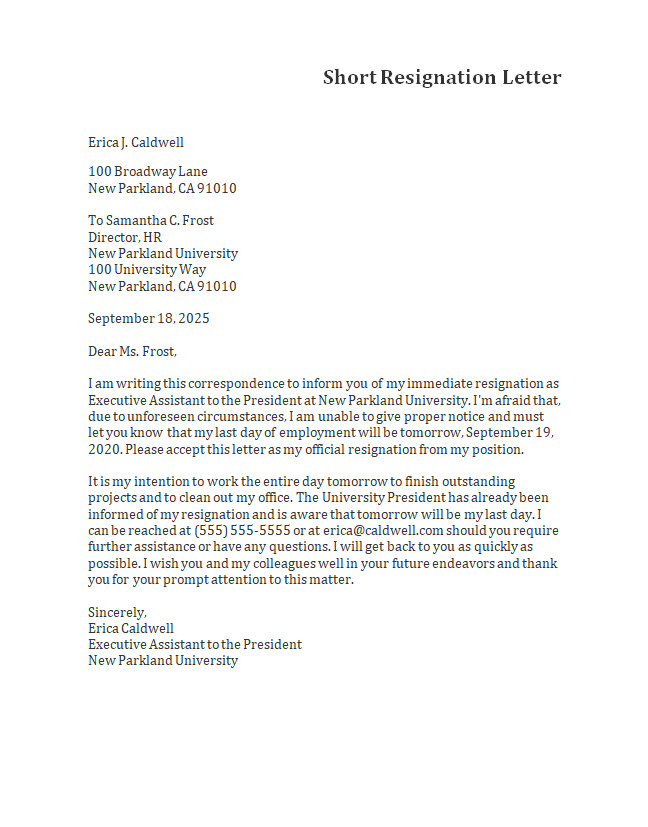
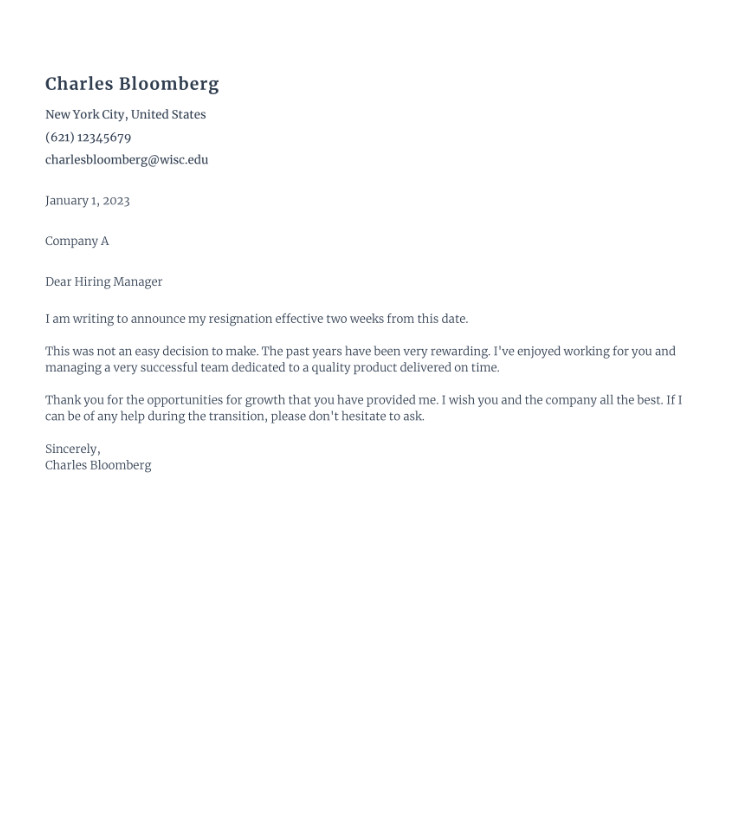
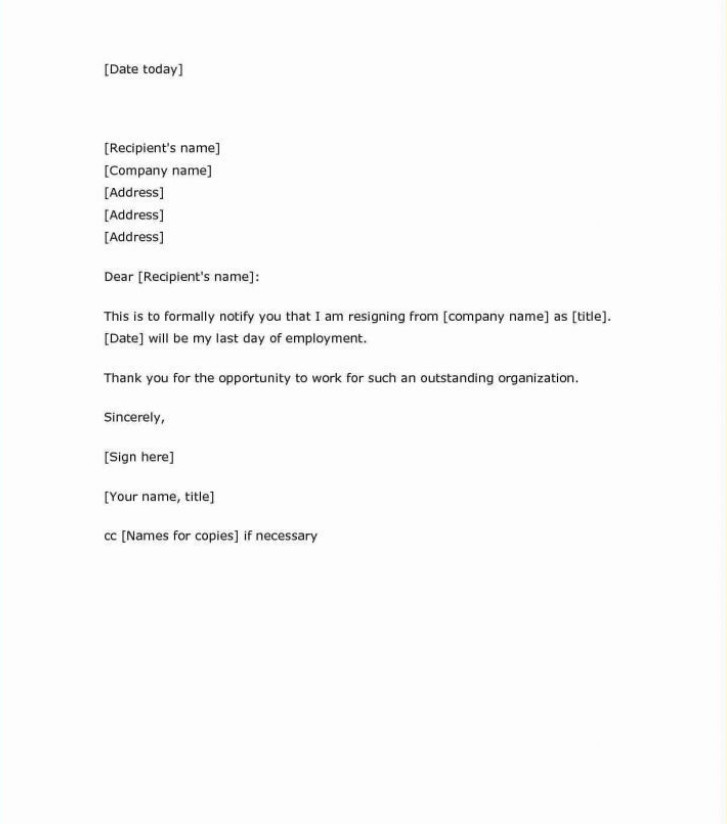
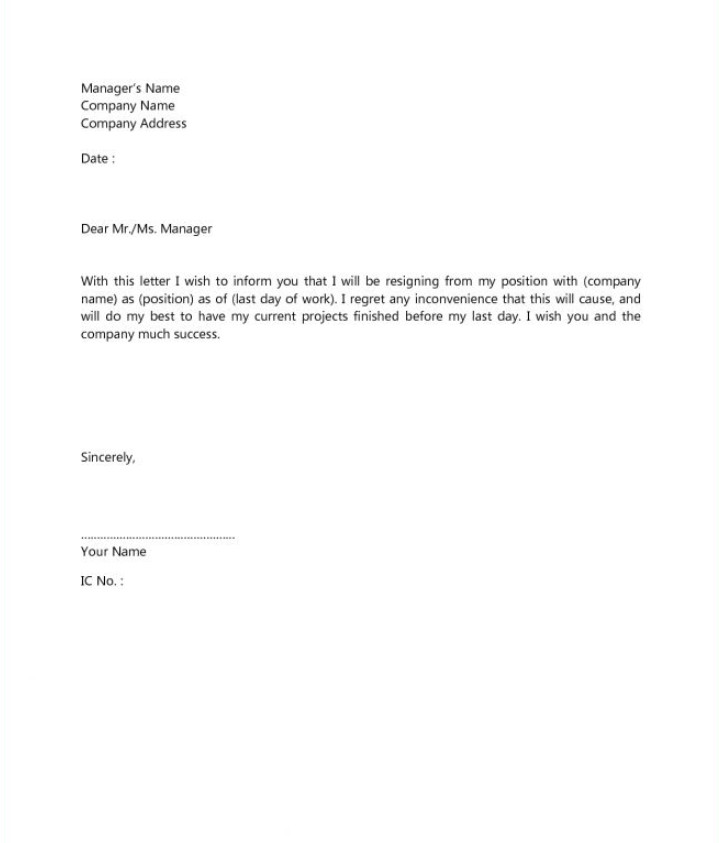
Tips for Successful Short Resignation Letters
Here are some tips to keep in mind when writing your short resignation letter:
- Be professional: Maintain a professional tone throughout your letter.
- Keep it concise: Stick to the essential information and avoid unnecessary details.
- Express gratitude: Take a moment to express your appreciation for the opportunities you’ve had.
- Offer assistance: Show your willingness to help with the transition process.
- Proofread and edit: Avoid spelling or grammatical errors by thoroughly proofreading your letter.
In Conclusion
Writing a short resignation letter is a professional way to inform your employer of your decision to leave your position. By following the steps outlined in this article and using the provided examples and tips, you can create a concise and effective resignation letter.
Remember to maintain a professional tone, express gratitude, and offer assistance to ensure a smooth transition. Good luck with your resignation!
Short Resignation Letter Template – Download
- Free Printable Exercise Planning Template - November 24, 2025
- Free Executive Summary Template (Word) - November 20, 2025
- Free Executive Resume Template (Word) - November 20, 2025